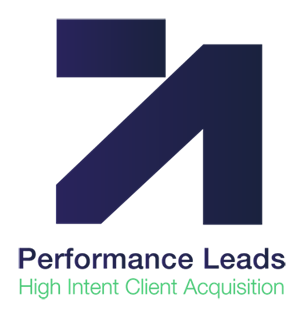How can I use email marketing to market my financial advisory firm?
Email marketing delivers unmatched ROI for financial advisors seeking to acquire leads and nurture client relationships. This comprehensive guide reveals proven strategies to craft targeted emails, segment contacts, provide value through content, and automate campaigns.

Introduction
Email marketing has become an essential tool for financial advisory firms looking to increase leads and build stronger client relationships. Studies show that email marketing generates high returns compared to other channels, making it a cost-effective way to reach prospects and engage clients. According to a report by Invoca, financial services companies spent $21 billion on digital advertising in 2021, with email marketing making up a significant portion of that spend.
Email marketing has an average return on investment (ROI) of $42 for every $1 spent across all industries, but that number is often higher in the financial services sector. Financial advisory firms that use email marketing generate more leads at a lower cost than other lead generation methods. Email also allows for ongoing nurturing of client relationships through valuable, personalized content directly in inboxes. With email open rates around 20% on average, email gives financial advisors an effective channel to build brand awareness and deliver their expertise to a large audience.
Benefits of Email Marketing for Financial Firms
Email marketing provides numerous benefits for financial advisory firms looking to increase leads and build client relationships in a cost-effective manner.
First and foremost, email is a relatively low-cost way for financial advisors to reach a large audience. Email campaigns have very little overhead besides time invested in creating and sending the emails.
Email also allows for ongoing touchpoints with both prospects and existing clients. By sending valuable content directly to inboxes on a regular basis, financial advisors stay top of mind.
Through email, advisors can deliver relevant and helpful content like market updates, retirement tips, and commentary on current events. This builds credibility and trust.
Regular email communication helps nurture relationships and increase brand awareness. Current clients gain confidence in the advisor's expertise and guidance.
Finally, email generates referrals and new business by converting subscribers into leads. Calls-to-action and lead magnets incentivize readers to schedule consultations.
In summary, email's low cost and ability to facilitate lasting connections with prospects make it an invaluable marketing channel for financial firms looking to grow.
Email Marketing Strategies for Financial Advisors
There are several effective email marketing strategies that financial advisors can use to build relationships and generate more business:
- Educational content emails to establish expertise - Send monthly newsletters or tips focused on relevant financial topics to demonstrate knowledge. According to SmartAsset [1], educational content results in 58% more engagement.
- Client appreciation emails - Send birthday or holiday emails to thank clients and build loyalty. Segment contacts to personalize messages.
- Email nurturing sequences for prospects - Create a series of touchpoints to build awareness and trust with potential customers. According to Constant Contact [2], segmented nurturing emails generate 320% more revenue.
- Promotional emails for webinars/events - Use email to promote virtual or in-person events, seminars, and webinars relevant to your audience.
- Holiday and birthday greeting emails - Send custom holiday messages and birthday wishes to build deeper relationships.
- Quarterly market updates and commentary - Share insights on market trends and outlooks regularly to position yourself as a thought leader.
- New offering announcements - Introduce new products or services through announcements to current and prospective clients.
- Email surveys and questionnaires - Use surveys to gather feedback and engage both prospects and clients.
Attracting New Leads
There are several effective email marketing strategies financial advisors can use to attract new leads:
Lead magnets and content upgrades - Offering free informational content like ebooks, checklists, or whitepapers in exchange for an email address is a proven tactic. Promote your lead magnet in your emails with a call-to-action. According to ConstantContact, lead magnets can help you grow your list up to 5X faster.
Calls-to-action in emails - Every email should include one or more CTAs to click for more information. These can link to your website, a lead capture form, content upgrades, or sales collateral. Ensure your CTA buttons stand out visually in the email.
Retargeting ads - Use pixels to track website visitors and then target them with ads on Facebook, LinkedIn, and Google to keep your brand top of mind and turn them into leads. According to MessageGears, retargeted prospects convert 70% more often than non-retargeted.
Email CTAs in other marketing channels - Promote your email list and lead magnets in other channels like social media, SEM, and even print ads. Multi-channel promotion helps increase sign-ups.
Creating Compelling Email Content
One of the most important aspects of effective email marketing for financial advisors is creating content that truly engages your audience. There are a number of strategies you can use to make your email content more compelling:
Personalize content whenever possible by including the client's name and relating the information specifically to their needs. This makes the email feel customized and tailored rather than a generic blast.
Focus your content on solving problems, addressing needs, and educating clients. For example, an email about college savings plans would resonate with parents.
Share relevant market insights, commentary, and your expert opinions to establish your credibility and expertise. This provides value readers can't get elsewhere.
Use a Q&A format or conversational tone to make your emails easy to digest. Outline the questions you get asked frequently and provide answers.
Curate and share content from third-party sources like financial publications to augment your own content. Always include your own commentary.
On holidays, birthdays, and special events, consider sending lighter, more inspirational content to take a break from "hard" financial content.
Email Frequency and Segmentation
When sending out email campaigns, financial advisors will want to find the right balance between staying top of mind and oversaturating contacts. According to FMG Suite, 1-2 emails per month will be sufficient for most advisors. However, the ideal frequency depends on your specific market and goals.
One smart approach is to segment your lists based on prospects versus current clients. Prospects may only need an occasional nurturing email, while clients can receive more frequent communications. It's also wise to identify high-value contacts that warrant more emails, such as top referring partners or major donors.
At a minimum, financial advisors should aim to provide quarterly market updates and commentary to their entire list. This establishes expertise and keeps your brand top of mind. Just be sure to offer opt-out and email frequency preferences so contacts can control the volume of emails received.
Email Marketing Platforms
There are several excellent email marketing platforms designed for financial advisors to choose from:
Mailchimp - With an easy-to-use interface, Mailchimp is a great option for beginners to email marketing. It provides excellent deliverability and built-in automation features.
Constant Contact - Known for its focus on automation, segmentation and tracking, Constant Contact offers strong email marketing capabilities for financial firms. Its integration with leading CRMs is a plus.
Drip - For advisors who want advanced segmentation options, Drip can help separate prospects from clients and tailor messaging appropriately. Workflows automate campaigns.
Ontraport - This platform combines CRM and email marketing capabilities, with a drag-and-drop builder and intuitive automation. The CRM integration is ideal for financial firms.
ConvertKit - A favorite among bloggers and content creators, ConvertKit offers excellent landing pages and lead capture features. It's easy to build email sequences for nurturing.
HubSpot - For those willing to invest in an enterprise-level platform, HubSpot provides a complete inbound marketing, sales and CRM solution. Its email marketing capabilities are robust.
Evaluating these and other tools based on integrations needed, ease of use, deliverability rates and other factors can help financial advisors choose the right platform for their email marketing and client communication needs.
Conclusion
Email marketing provides a powerful way for financial advisory firms to maintain ongoing relationships with existing clients while also attracting new prospects. By developing worthwhile email content focused on providing real value, financial advisors can showcase their expertise and build trust.
Some key takeaways include focusing emails on solving client problems, sharing valuable insights and market commentary, and using email to distribute helpful resources and event promotions. Segmenting contact lists and personalizing content is crucial for improving engagement and open rates.
With the right email marketing platform, financial advisory firms can create automated and integrated journeys to nurture new leads and continue engaging both prospects and clients for the long-term. Used strategically and consistently, email marketing delivers an excellent ROI compared to other channels.
To get started improving your own financial advisory firm's email marketing, download our free email marketing guide. And feel free to reach out if you need help crafting an effective email marketing strategy for your business.




